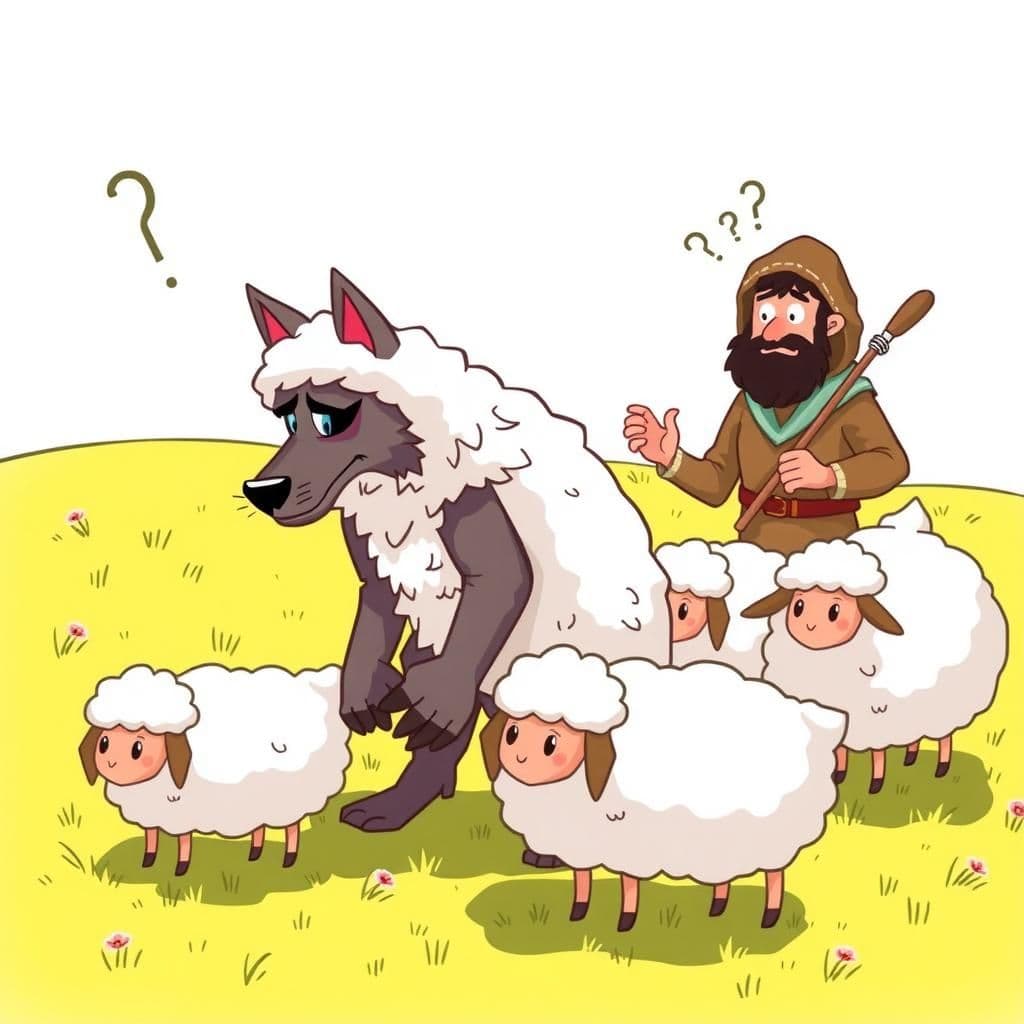The Wolf in Sheeps Clothing

Story Summary
In this easy small story with a moral, a Wolf disguises himself in sheep's clothing to deceive the shepherd and gain access to the flock. However, his plan backfires when the shepherd, mistaking him for a sheep, kills him instead. This life-changing story illustrates that those who seek to harm others often end up facing harm themselves, reminding us of the importance of integrity.
Click to reveal the moral of the story
The moral of the story is that deceit ultimately leads to one's own downfall.
Historical Context
"The Wolf in Sheep's Clothing" is a fable attributed to Aesop, a storyteller from ancient Greece, whose works have been passed down through generations, often retold with moral lessons. This tale reflects themes of deception and the consequences of harmful intentions, resonating through various cultural adaptations, including versions in medieval European literature and modern children's storytelling. The moral, often summarized as "harm seek, harm find," serves as a cautionary reminder about the dangers of deceit.
Our Editors Opinion
The tale of "The Wolf in Sheep's Clothing" serves as a cautionary reminder in modern life about the dangers of deceit and the eventual consequences of one's actions. For instance, in a corporate setting, an employee who pretends to be a cooperative team player while undermining colleagues may initially thrive, but ultimately faces exposure and downfall when their true motives come to light, demonstrating that dishonesty often leads to self-destruction.
You May Also Like

An Officer and a Thug
In "An Officer and a Thug," a Chief of Police reprimands an Officer for beating a Thug, only to hilariously discover that both are stuffed figures. This humorous exchange, a standout among well-known moral stories, underscores the absurdity of their situation and offers a life lesson about perspective and understanding. The Chief's unintentional reveal of his own stuffed nature serves as a reminder of the importance of self-awareness in personal growth.

The Wolves and the Dogs
In "The Wolves and the Dogs," a fable that imparts valuable lessons learned from stories, the Wolves claim their conflicts with the Sheep are caused by troublesome dogs and assert that removing them would bring peace. However, the Sheep challenge this notion, highlighting that dismissing the dogs is not as simple as the Wolves believe. This short tale with moral encourages reflection on the complexities of conflict resolution.

The Ass and the Wolf
In "The Ass and the Wolf," a classic fable from the realm of moral stories written for both entertainment and instruction, an Ass feigns lameness to deceive a predatory Wolf. When the Wolf offers to help by removing a thorn, the Ass kicks him and escapes, prompting the Wolf to reflect on the folly of trying to heal instead of embracing his nature as a predator. This long story with moral highlights the importance of understanding one’s true role in life, making it a fitting choice for bedtime moral stories.
Other names for this story
Cunning Disguise, Deceptive Appearance, The Hidden Predator, Fleece of Deceit, The Sheep's Betrayal, Cloaked in Wool, The Masked Hunter, The False Innocent
Did You Know?
The story of "The Wolf in Sheep's Clothing" illustrates the theme of deception and the idea that those who seek to harm others may ultimately fall victim to their own tricks, emphasizing the moral that deceit can lead to one's downfall.
Subscribe to Daily Stories
Get a new moral story in your inbox every day.